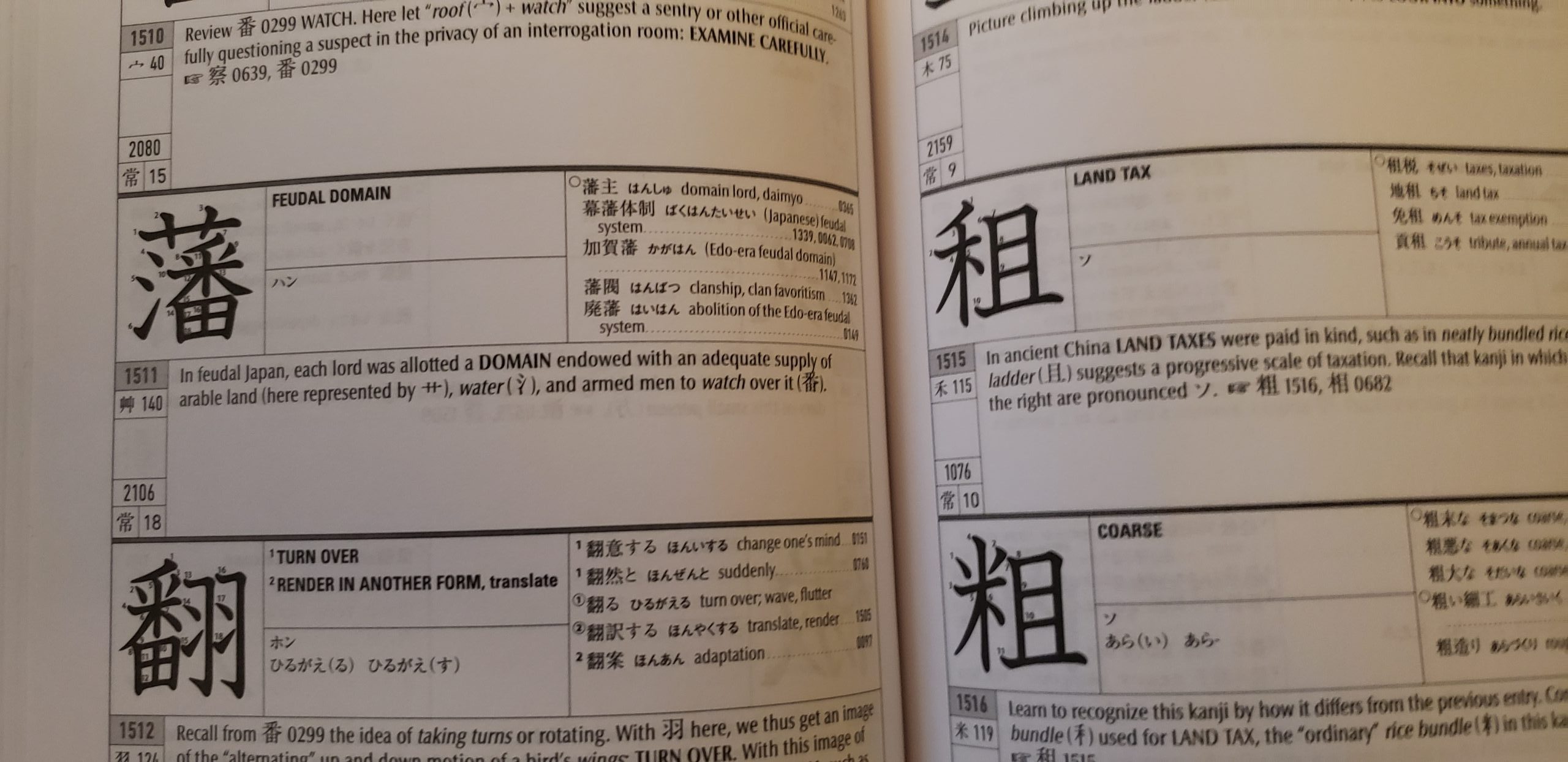
I started off this blog talking about kanji. and I’ll never stop talking about kanji. Intriguing, beautiful, frustrating, vital…what’s not to love?
These characters, borrowed from the Chinese and then evolved by the Japanese over many centuries, are one of the biggest obstacles in learning Japanese well. You can certainly get to some level of proficiency without learning kanji. but if you can’t read in a language, how proficient are you really?
Books
I didn’t start my kanji studying with books, but I certainly splashed out some cash on them.
Remembering the Kanji
This certainly is one of the most well-known study guides. James Heisig locked himself in a library to avoid taking courses, and descended on a cloud from heaven three months later with a camera ready copy of volume 1 of his famous series clutched in his hands. (Then later he went to play baseball for the summer with some Japanese school kids, and developed complete fluency.)

I had volume 1 of this series for a while, and it annoyed the heck out of me. He makes the point that you need to use strong imagery to learn these Japanese characters as a Western person, and the best way to do that is through using descriptive stories about the components that make up all kanji. Then he does that for you for the first third of the book. Then he goes, “Welp, time for you to do your own stories, but to help you out, I’ll still print what the kanji looks like for you. Heck, I’ll even throw in the definition!”
No teaching of pronunciation, because that supposedly slows down the learning process. So what you get is a transcription of part of the Japanese dictionary, 33% of which he put the effort in to make descriptive stories, and then in the last 67% maybe he was off playing baseball.
I know people love this book. But I couldn’t stand it. Wound up giving it to a classmate for free, because I was sick of looking at it. Plus now you can apparently download a PDF of it everywhere on the Internet, so I wasted money twice, in my mind. Shut up, you’re the one being irrational.
The Kodansha Kanji Learner’s Course
No w this one is much better. The author actually put in some effort. He put in pronunciation, kanji that are related to the kanji being studied, cross-references, appendices, the whole thing. Plus it has a great reference in
The Kodansha Kanji Learner’s Dictionary
This is a great little dictionary. Easy to use, nice big characters, cross-references, related kanji to the one you’re looking at, my first introduction to the SKIP system, just a grand little reference that will get you through a lot of studying. But…apps are too seductive.
Apps
I spent a lot of time on Tofugu at the start of my Japanese studies. Back then, they were actively pushing out a lot of great study resources. Looking now, they still are.
And of course, one of the resources was WaniKani.
WaniKani
I fell in love with WaniKani the very first time I used it. An SRS that had kanji arranged in some sort of order, loosely based on the Joyo Kanji set, with all the image stories already done for me, and more importantly, the kanji pronunciations!!
Others might not need it, but I need those pronunciations to get the kanji firmly placed in my memory. Baseball games be darned.
Various Android Apps
Let me just glance at my phone…
- Kanji Study — fun on the subway, when I was still using the subway rather than isolating at home.
- 手書き漢字ドリル1026 — fun drawing program, but when it had problems with recognizing me drawing 白, I gave up on it.
An Embarassment of Study Choices
There sure are a lot. I can’t even remember some of the other apps I’ve used, like a falling block game where you try and make words from falling kanji, or other attempts at SRS systems. At the end, WaniKani won out.
Well, this has gotten pretty long, so I’ll wrap this up.